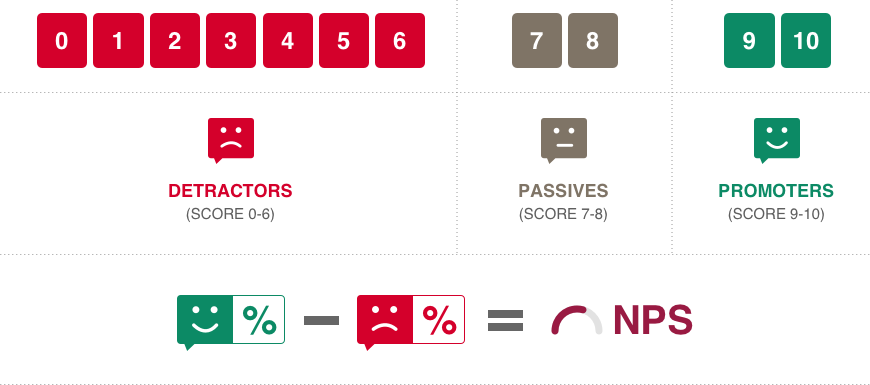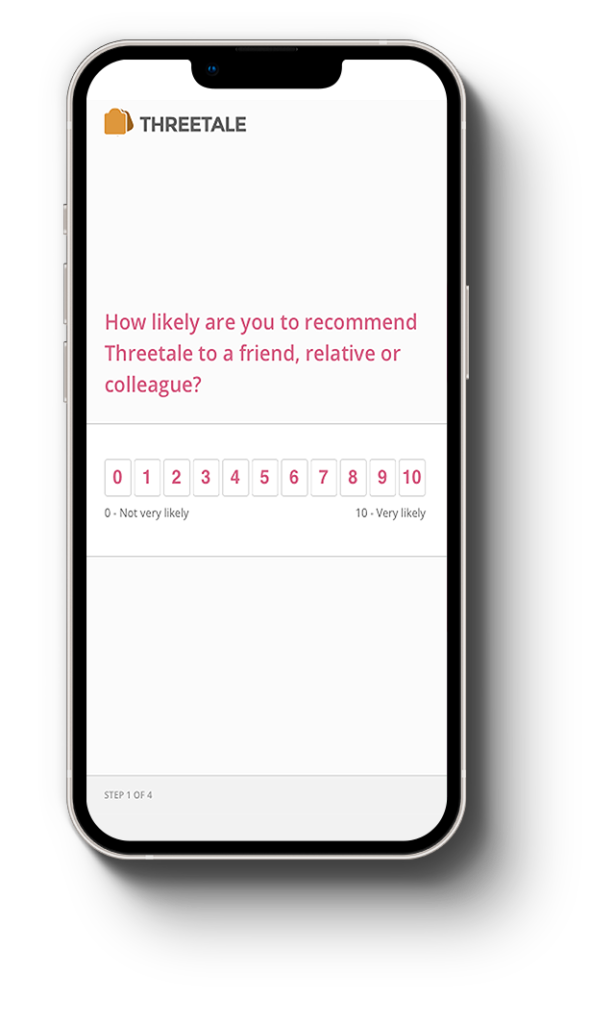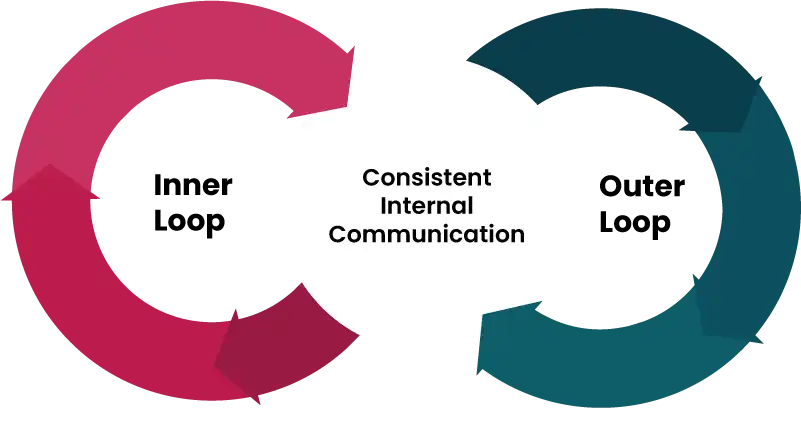Net Promoter Score (NPS) 101
What is Net Promoter Score (NPS)?
Net Promoter Score or ‘NPS’ is a simple method of measuring the overall likelihood of a customer recommending your product, service or company to a friend or colleague. NPS scores are an indicator of how much you have delighted a customer that he/she will bring another customer to your business – helping you grow your customer base and revenue.
Why use NPS®?
Linked to Profit
According to Bain & Company, the developers of the Net Promoter Score, “Companies that achieve long-term profitable growth – have NPS scores two times higher than the average company.” And this makes perfect sense. If you increase delight in your customer base then they are less likely to churn.
The measure of Consumer Behaviour
The Net Promoter Score is a simple yet practical way to measure the attitudes and behaviours of customers. Net Promoter® surveys can consist of just two to three questions which can easily be done via a number of means.
Simple to
Understand
Net Promoter Score calculation does not include complex statistical analogy but a single number that can be measured weekly or monthly. Bain & Co discovered through their extensive research that Net Promoter Score explained roughly 20% to 60% of the variation in organic growth rates among competitors.
How to calculate NPS
The Net Promoter Score is calculated by the percentage of who are promoters subtracted from the percentage of detractors. By doing this, it allows companies to measure the overall performance through their customers’ eyes. High scores on this question correlated strongly with repurchases, referrals, and other factors that contribute to a company’s growth.

For example, if 25% of your respondents are Detractors (scored 0-6), 27% are Passives (scored 7-8) and 48% are Promoters (scored 9-10), your Net Promoter Score is 48-25 = 23.
Measuring Net Promoter Score
To measure NPS, customers are asked the ultimate question:

How likely is it that you would recommend Company-X to a friend or colleague?
The answer is measured on a scale from 0 to 10. Then segment results into three categories: Promoters, Passives, and Detractors.
Promoters: those who score 9-10 are more loyal customers who are likely to buy more and help grow the business
Passives: those who score 7-8 are satisfied with your product or service but are still more vulnerable to competitive offerings
Detractors: those who score 0-6 are unhappy with your company and are highly likely to churn or spread negative words about your business
Types of NPS
Measuring what matters

Relationship NPS
Lifetime experience
in a company

Episodic NPS
Meeting the customer want/need

Transactional / Touchpoint NPS
Discrete contact
with your brand
Net Promoter System®
The Net Promoter System is a practical framework that is established from the top down that incorporates the entire organisation including employees, processes, and strategies.
As Bain & Co. put it together, the system starts at the top. From the leadership team to provide strategic priority and vision that are customer-focused. Then utilising Net Promoter Score as the key metric to measure and track over time and part of the Net Promoter system to ask an open-ended question for the reason behind the score.
At this point, the feedback is broken up into Inner Loop and Outer Loop.

The Inner Loop
Ask open-ended “why?” questions after asking the NPS question. The feedback contains both quantitative ratings and qualitative comments. The feedback is passed onto the affected parties within the organisation to action and close the loop.
The inner loop gives the affected parties a chance to learn and implement changes on their own with supervisor involvement when necessary.
The Outer Loop
Used at times when the feedback action exceeds the ability of the frontline and individuals. It means digging deeper into the root cause of the issue and identifying the processes and procedures that affected this. Taking in data from the inner loop, combining that with operational data sets, frontline feedback and marketplace insights to understand the impact and prioritise the transformation.
In between, it is best to have consistent open communication between the frontline and head office. Maintain weekly discussions to build commitment, give and receive help and open escalation path for serious issues. Ensure each member is prepared before the meeting and encourage participation from every member of the group to ensure maximum effectiveness.
Keep employees engaged and realise their contribution at the frontline directly impact customer experience. When hiring, find those with a high Emotional Quotient (EQ), not just a high Intelligence Quotient (IQ). Continuous training and introducing new concepts to employees. Reward and continued recognition of their efforts to ensure it is not diluted.
Need to start measuring NPS?
See how the Resonate Platform enables the inner and outer loop and delivers the complete Net Promoter System.
Related Resources
Guides and eBooks
Introduction to Launching Successful CX Programs
Learn how NPS works and understand closed-loop feedback to elevate your CX strategy.
Blog
Different Types Of NPS – Why And When To Use Them
All of us have, at some point, received a text or email survey from our favorite service provider asking “How likely are you to to recommend us to a friend or colleague?”.
Reports and Whitepapers
Integrating NPS with Data Strategy
Discover how integrating NPS into data strategies can optimize marketing, enhance customer insights, and drive business growth.




